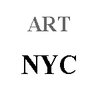
Young people these days enjoy drinking alone at home. The scene where you take a close-up shot while looking at your boss or senior is only reproduced in the drama. Instead, regardless of whether the house is big or small, they decorate the home bar nicely and enjoy high-end wine or whiskey while listening to their favorite music or watching a movie. It is said that they intentionally visit Korean premium minority or traditional liquor and collect unique local beer. Thanks to this, whiskey and wine have emerged as good products at local convenience stores.
Alcohol often appears in the artist's work. In particular, in Montmartre, which was the home ground of impressionists, poor painters and writers gathered to drink and discuss all night, and at that time, the alcohol they often drank was called "Absent." Absent is a liquor with a unique taste and aroma made from mugwort and apricot seeds. It was a strong drink with a green color and alcohol content ranging from 45 to 85 degrees Celsius, and it was also a dangerous drink that could cause hallucinations if you drank a lot. However, this absinthe, which makes poor artists and workers forget the day's hardships, must have been more desperate than anything else. The reason why Van Gogh's painting is exceptionally green is because of this Absent. Toulouse Lautrec, the only one on Montmartre Hill who had no worries about money, also drank absinthe while looking at the dancers of Moulin Rouge, became close to Van Gogh, and helped him financially. He also used to enjoy high-quality whiskey, but alcohol was a great comfort to him, who was born a dwarf and lived in prejudice and discomfort. However, he was said to have been treated for alcoholism because he was so drunk.

Pablo Picasso, the epitome of the painter, was also very close to the green witch Absent. Picasso was also lonely and cold when he was unknown. His young works are called the Blue Age because they are exceptionally blue, and there is speculation that he drank a lot of Absent. In those days, the back streets of Paris were poor but romantic, and they were all drunk but full of art. The absent solid, which was a comfort to them, is still loved by people worldwide, evoking the nostalgia of that era.

Whiskey's distillation technique is inaccurate, but it is known that it was brought to Europe through the Arabs during the Crusades. Like wine, alcohol was only manufactured by priests, but when the church was closed due to Henry VIII's divorce, scattered whisky engineers began to spread to private homes. Then, in the 18th century, England and Scotland merged, and the Malt tax began to take place. Malt is a crucial ingredient in whiskey production, and when it started to tax it, distillers began to go into the mountains and drink. With the passage of the new tax law after the 19th century, whiskey could come out again in the sun. While studying how to solve natural or storage problems during the dark, they created a unique amber color and aroma using ingredients called Pete and Sherry oak barrels.


